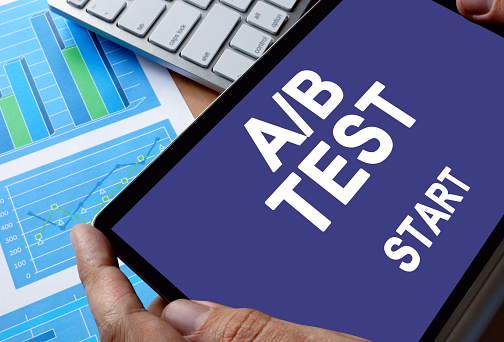Email marketing is an effective tool for businesses to engage with their customers and promote their products or services. However, not all email campaigns are created equal. Some may perform better than others, depending on various factors such as the subject line, call-to-action, design, and content. This is where A/B testing comes in, a valuable technique that can help businesses optimize their email campaigns and achieve better results. In this blog post, we'll discuss the importance of A/B testing in email marketing and how it can benefit your business.
A/B testing, also known as split testing, involves sending two or more variations of an email campaign to a small sample audience and analyzing the results to determine which version performs better. The winning version is then sent to the remaining subscribers, resulting in better engagement and conversion rates. A/B testing can help businesses to:
-
Improve Open Rates: The subject line is the first thing that subscribers see when they receive an email. It is essential to create a subject line that catches their attention and entices them to open the email. A/B testing can help businesses test different subject lines and determine which one generates a higher open rate. This can be achieved by sending two emails to a small sample audience, each with a different subject line, and then analyzing the results. The winning subject line can then be used in the remaining email campaign, resulting in a higher open rate.
-
Increase Click-Through Rates: Click-through rates (CTR) are a measure of how many subscribers click on a link within an email. A/B testing can help businesses test different calls-to-action (CTAs), button designs, and content to determine which one generates a higher CTR. By analyzing the results, businesses can identify which version of the email campaign is more effective in driving clicks and then use it for the remaining subscribers.
-
Boost Conversion Rates: The ultimate goal of an email campaign is to convert subscribers into customers. A/B testing can help businesses optimize their email campaigns to achieve a higher conversion rate. By testing different designs, content, and CTAs, businesses can identify which version generates more conversions and then use it for the remaining subscribers.
-
Reduce Unsubscribe Rates: Unsubscribe rates are a measure of how many subscribers opt-out of receiving emails from a business. A/B testing can help businesses identify the reasons why subscribers are unsubscribing and make changes to their email campaigns accordingly. For example, businesses can test different frequencies of sending emails, content types, and targeting options to determine which one generates a lower unsubscribe rate.
-
Improve Overall Email Campaign Performance: A/B testing can help businesses optimize their email campaigns to achieve better results overall. By testing different elements of an email campaign, businesses can identify what works and what doesn't, and make changes accordingly. This can result in better engagement, higher conversion rates, and more revenue.
Moreover, A/B testing can also help businesses to better understand their audience's preferences, behaviors, and needs. By testing different variations of an email campaign, businesses can gather data on what their subscribers respond to and tailor their future campaigns accordingly. This can lead to a better understanding of the target audience and the creation of more effective and personalized email campaigns.
Another benefit of A/B testing is that it can help businesses to avoid assumptions and biases. It is common for businesses to have preconceived notions of what will work best for their subscribers. A/B testing allows businesses to test these assumptions and determine if they are accurate or not. This can prevent businesses from making decisions based on faulty assumptions and instead rely on data-driven insights.
However, it is important to keep in mind that A/B testing should be conducted carefully to ensure accurate and reliable results. It is essential to test only one variable at a time to avoid confounding variables and to ensure that the results are specific to that variable. It is also important to have a large enough sample size to ensure that the results are statistically significant and not due to chance.
In conclusion, A/B testing is a valuable technique that can help businesses optimize their email campaigns and achieve better results. By testing different elements such as subject lines, CTAs, content, and designs, businesses can identify what works best for their subscribers and make changes accordingly. This can lead to higher engagement, conversion rates, and revenue. As email marketing continues to be a critical tool for businesses, A/B testing should be an essential part of any email marketing strategy.
Overall, it is important to keep in mind that A/B testing is not a one-time process but rather an ongoing effort to improve email campaigns continually. Businesses should regularly test different elements and analyze the results to determine what works best for their subscribers. By doing so, they can stay ahead of the competition and achieve better results in their email marketing efforts.





Leave a Reply